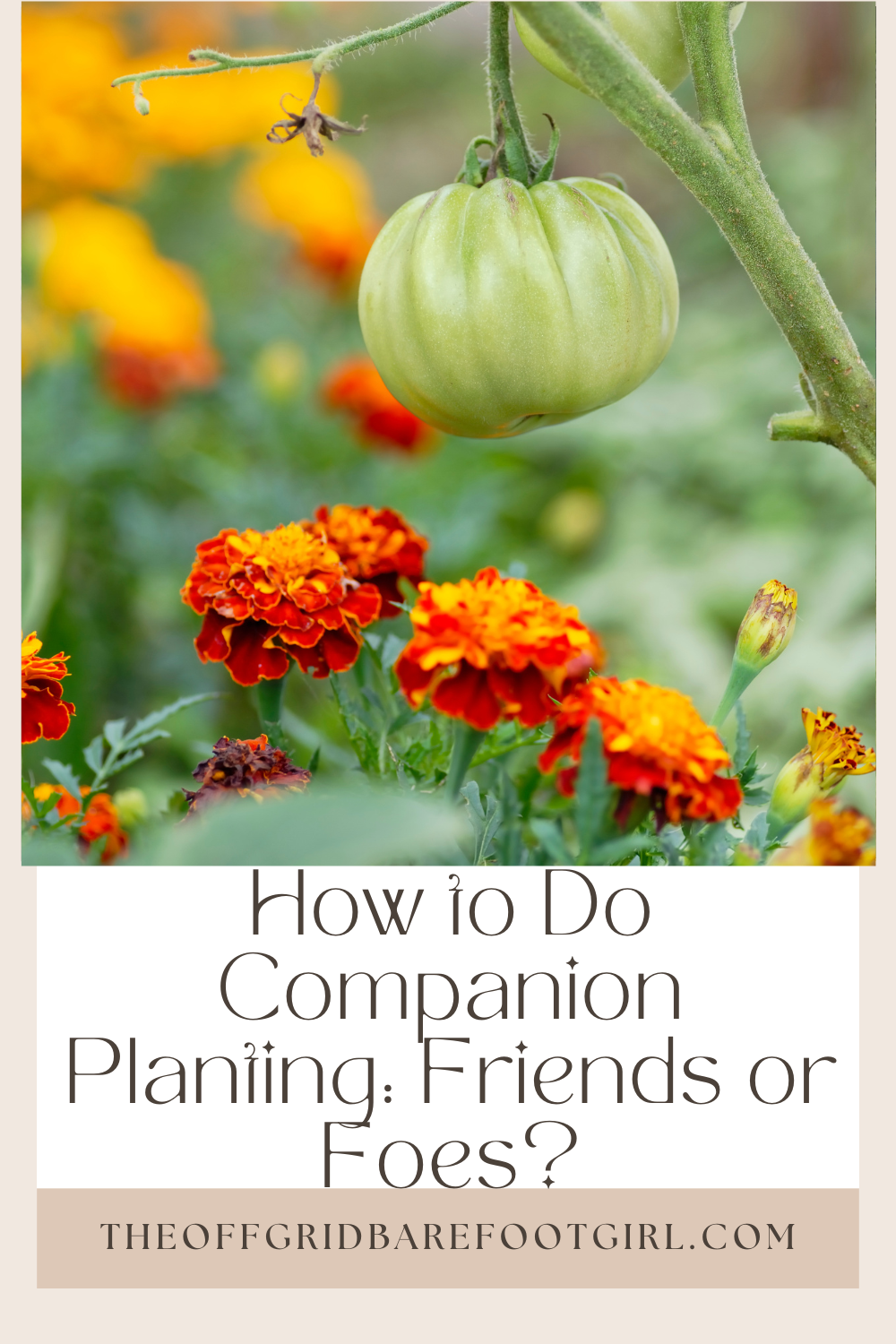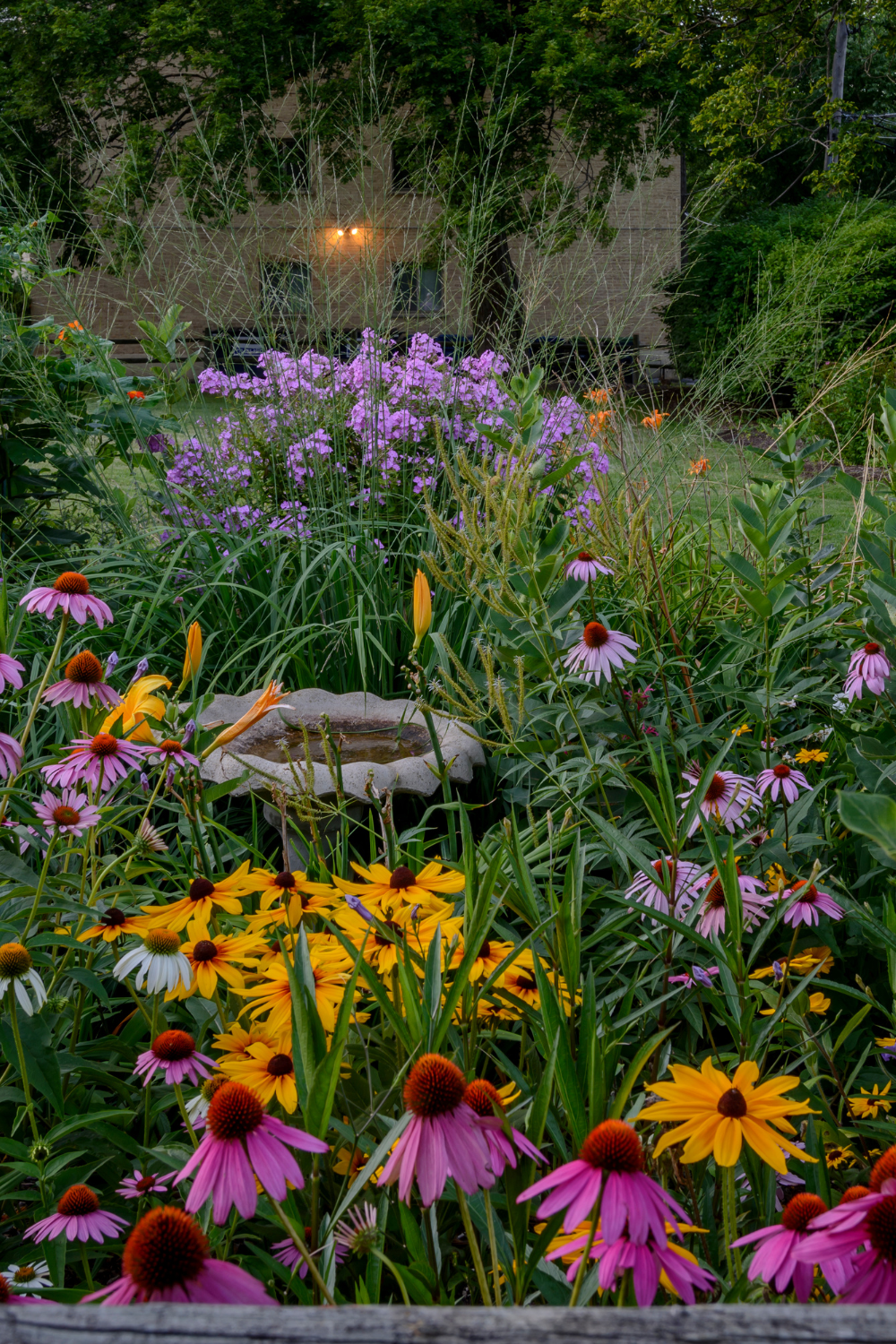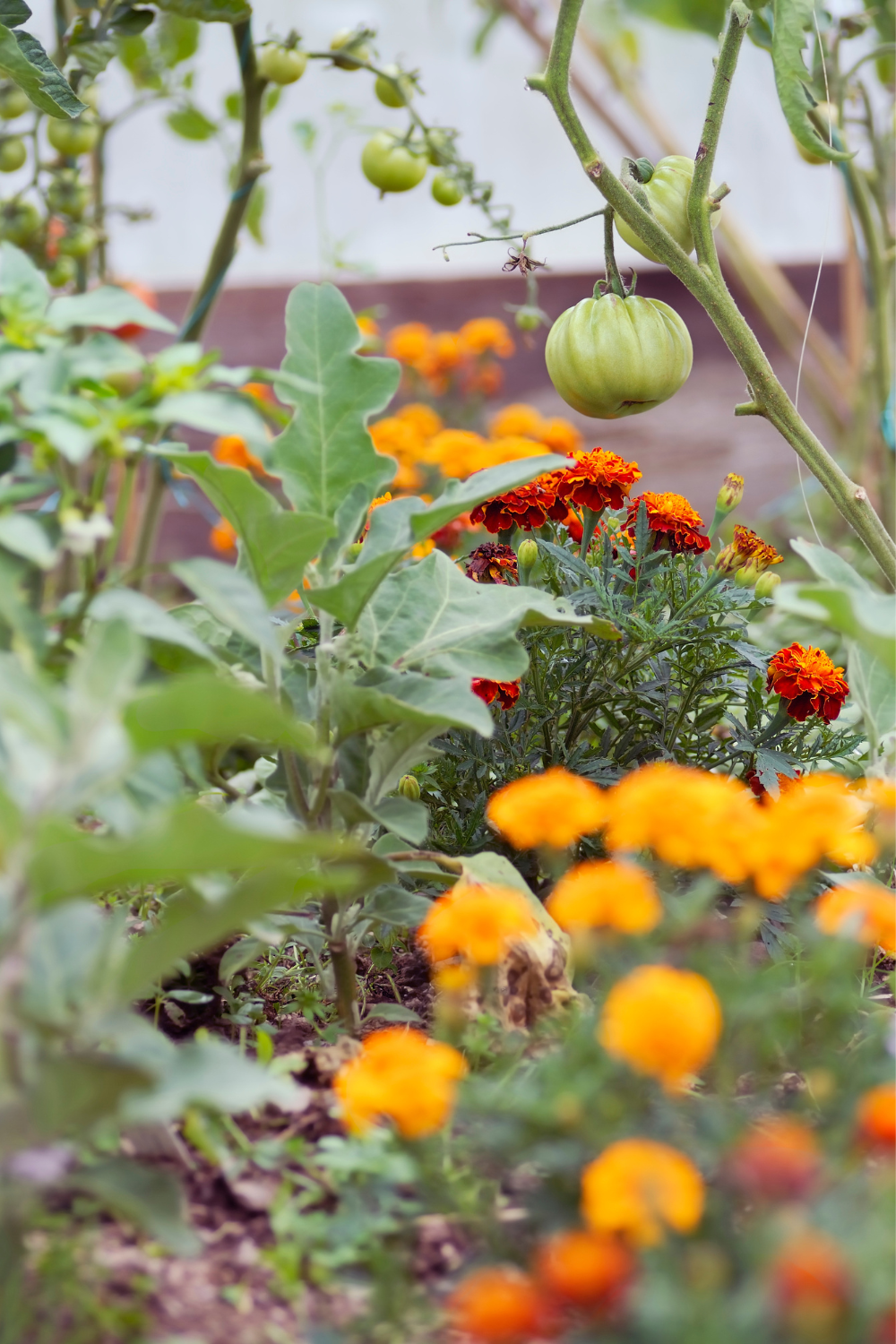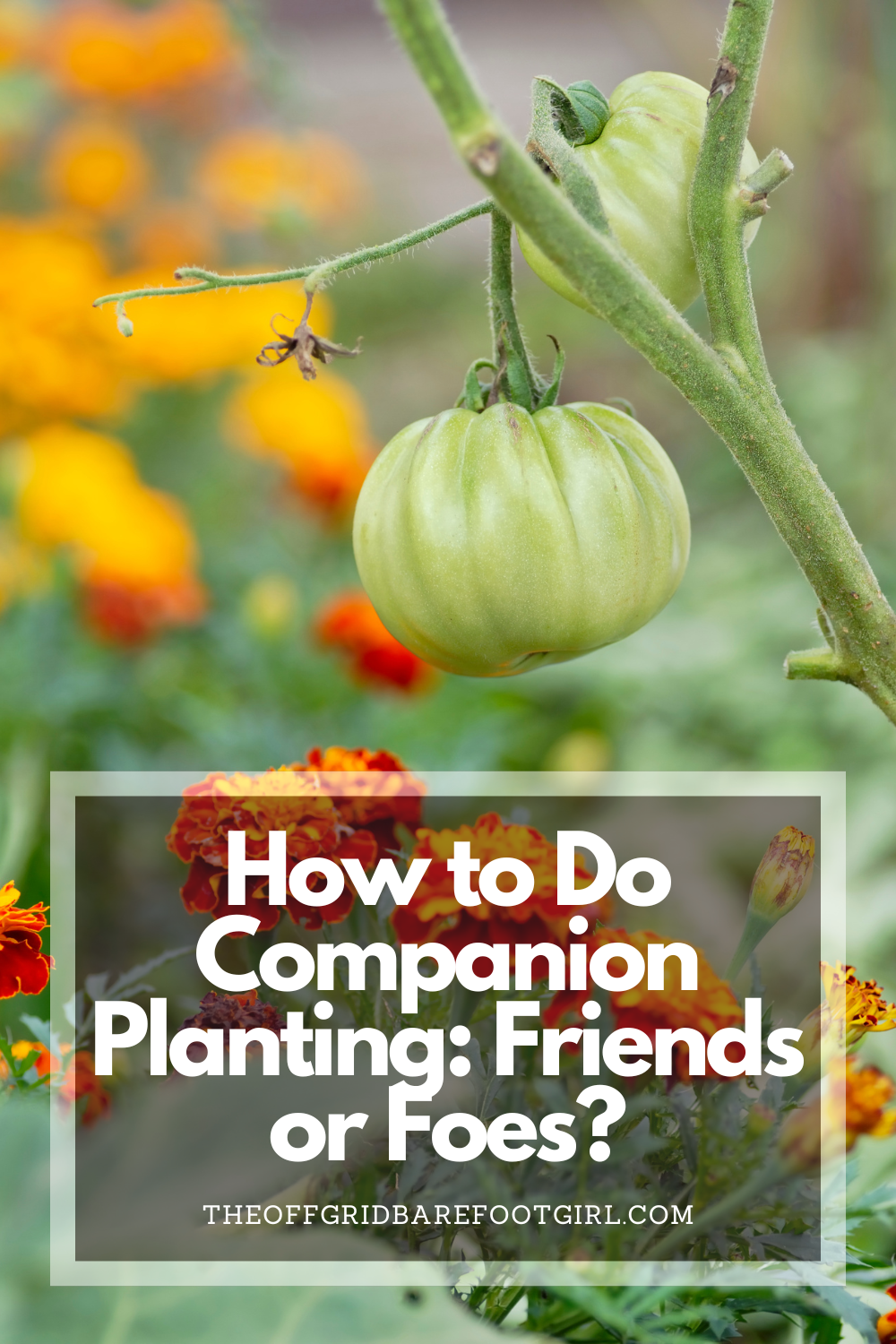Discover the secrets of companion planting! Learn which plants grow as friends, which clash as foes, and how to design a thriving garden naturally.
When it comes to gardening, not all plants get along. Some thrive when planted side by side, helping each other grow stronger and healthier, while others compete for resources and attract unwanted pests. This is the essence of companion planting—a method that gardeners have used for centuries to boost yields, improve soil health, and keep gardens in balance. In this guide, I’ll explore which plants are true “friends,” which act as “foes,” and how you can use these natural partnerships to create a more productive and harmonious garden.
The most successful way of growing a thriving garden is by companion planting. Like us, plants have friends and foes. We like to sit by other people more than others at school or workplaces just as plants like to be planted next to their friends too. After all, they will be sitting next to each other all season long!!
Remember in school how fun it was to have your desk assigned next to all your friends for the whole year? It is basically the same concept. So gather your plant’s friend list and assign them to grow alongside each other all season long and watch how your garden happily thrives.
This is a pinnable post. Tap or hover over any image in this post to pin to your Pinterest Boards.

Plants that like each other, attract beneficial insects and pollinators to each other as well as repel pesky enemies to keep each other safe, happy, and healthy. Remember your tight-knit friend group in school when you all looked out for each other? Keeping your enemies out and your friends in is exactly the same thing that plants like to do too.
When you keep their foes away from them, you will be preventing your garden from acquiring diseases and pests and find that you do not need extra help with chemicals just to be successful. If you skip companion planting in your garden, you are more likely to resort to using chemicals on your plants.
However, you can avoid the use of chemicals if you learn companion planting and plant your plants on the grounds of friends they love. Your garden will naturally thrive and you will have less work on your end to keep them healthy and you will be a successful gardener with a happy successful garden.
Companion Planting with the Foodscape Garden Method

When you are using the companion planting method in your garden, you are basically creating a foodscape garden. Plants that grow together for the benefit of one another look amazing together and offer a full harvest of fruits, vegetables, herbs, and flowers.
Planting a foodscape garden by bringing beneficial plants together helps improve their ecosystem. Root vegetables planted around the beds of their companion plants can help improve the soil by achieving aeration and help break up soil compaction with their deep root systems and tubers while flowers help bring pollinators to the vegetables and fruit above ground.
You can find more information about how to grow a foodscape garden in my other post.
How To Grow a Foodscape Garden From Scratch
Attract Pollinators with Companion Planting Flowers
Companion planting with flowers and vegetables mixed together attracts pollinators to help your garden thrive and produce an abundant harvest for you.
Companion flowers not only add beauty to your vegetable garden, but beneficial flowers help combat insects in the garden to protect your plants.
Best Companion Planting Flowers for Vegetables
Flowers are amazingly beautiful and act as natural pest control in your garden to help you grow organically. There is nothing better than adding beauty to your garden with blooming beneficial flowers to bring health and abundance to your vegetable and fruit garden.
Here is a list of companion planting flowers to add to your garden to help it thrive by attracting helpful pollinators and beneficial insects that eat and deter the pesky insects away from your garden.
Companion Planting Friends & Their Benefits
1. Basil and Tomatoes
Basil repels tomato hornworms and aphids while attracting bees and pollinators with its fragrant flowers. This not only boosts tomato flavor but also increases fruit set through better pollination.
2. Marigolds and Vegetables
Marigolds release a natural chemical that deters nematodes and many garden pests. Their bright, showy blooms draw in bees, butterflies, and hoverflies, helping pollinate nearby veggies like squash and beans.
3. Carrots and Onions
Onions ward off carrot flies, while carrot flowers (if allowed to bolt) attract pollinators and beneficial insects like parasitic wasps that also help control pests. Together, they balance pest control and pollination.
4. Cucumbers and Nasturtiums
Nasturtiums act as a trap crop, pulling aphids and cucumber beetles away from cucumbers. Their vibrant blooms lure bees, ensuring more cucumber flowers get pollinated for a heavier harvest.
5. Sunflowers and Cucumbers/Beans
Tall sunflowers provide natural support for climbing cucumbers or beans, creating a mini ecosystem. Their large, pollen-rich blooms attract bees in abundance, improving pollination for nearby crops.
6. Lavender and Fruit Trees
Lavender repels moths and fleas while attracting swarms of pollinators like bees and butterflies. Planted under fruit trees, it ensures blossoms are visited more often, leading to better fruit production.
7. Squash and Borage
Borage repels hornworms and beetles while its star-shaped blue flowers are a favorite of bees. Interplanting it with squash boosts pollination, which is crucial for good fruit development.
8. Dill and Cabbage
Dill repels cabbage loopers and attracts beneficial insects like hoverflies and lacewings. When it flowers, dill also draws in pollinators that help nearby vegetables and herbs set seed.
Benefits of Companion Planting

There are several benefits of companion planting in the garden. With this comprehensive list of companion plants, you can begin to plant beneficial plants together and be off to a great start on a successful gardening season.
- Improve the garden ecosystems.
- Attract pollinators to the garden and improve the abundance of harvest.
- Prevent pests and diseases in the garden.
- Help plants thrive.
- Improve soil compaction and health and weed control.
The next few pages reveal a helpful chart to show you who’s friends with whom and who hates whom.
Plants are actually pretty friendly and you will notice that their friend list is actually longer than their foe’s list. You will learn that garlic is friends with everybody and hates nobody!!
Companion Planting Charts
| CROP | FRIEND | FOE |
| Beans | Carrots, Cabbage, Cauliflower, Cucumber, Marigolds, Corn | Chives, Leeks Garlic |
| Beets | Bush Beans, Broccoli, Corn, Garlic, Onion, Leeks, Lettuce, Cauliflower | Pole Beans |
| Broccoli | Celery, Dill, Rosemary | Oregano, Strawberries, Tomatoes |
| Cabbage | Beets, Potatoes, Onion, Celery | Strawberries, Tomatoes, Eggplant |
| Carrot | Beans, Lettuce, Peas, Tomatoes, Onion, Chives | Dill, Parsnips |
| Cauliflower | Beans, Celery, Oregano | Peas, Tomatoes, Potatoes |
| Celery | Cabbage, Spinach, Tomatoes, Onion | Parsnips, Potatoes |
| Corn | Beans, Cucumbers, Peas, Pumpkin, Squash, Potatoes, Sunflowers | Tomatoes |
| Cucumber | Peas, Lettuce, Celery | Cauliflower, Potatoes, Basil |
| Eggplant | Spinach, Peppers, Potatoes, Beans | Fennel |
| Garlic | Cucumber, Lettuce | Nobody!! |
| Leek | Carrot, Celery | Legumes |
| Lettuce | Carrots, Radishes, Strawberries, Beets | Beans, Parsley |
| Onion | Broccoli, Cabbage, Lettuce, Tomatoes | Beans, Peas |
| Peas | Beans, Carrots, Corn, Cucumber | Onion, Garlic |
| Pepper | Tomatoes, Parsely, Basil, Carrots | Tomatoes, Parsley, Basil, Carrots |
| Potato | Corn, Cabbage, Peas, Eggplant | Pumpkin, Sunflowers, Cucumber |
| Pumpkin | Corn, Squash | Potatoes |
| Radish | Carrots, Peas, Spinach, Beans, Beets | Cabbage, Cauliflower, Brussel Sprouts |
| Spinach | Eggplant, Leeks, Lettuce, Peas, Radish, Strawberries | Parsnips, Potatoes |
| Swiss Chard | Beans, Celery, Cauliflower | Parsnips |
| Strawberry | Beans, Garlic, Lettuce, Peas, Spinach, Thyme | Fennel |
| Tomato | Basil, Carrot, Celery, Chives, Lettuce, Marigolds, Onion, Peppers, Parsley | Corn, Dill, Fennel, Potatoes |
Conclusion
Companion planting is more than just placing plants side by side—it’s about creating a thriving ecosystem in your garden where every plant has a purpose. By pairing friends that support one another through pest control, soil enrichment, and pollinator attraction, you encourage healthier crops and more abundant harvests. At the same time, knowing which plants clash helps you avoid unnecessary competition and frustration. With a little planning, companion planting can transform your garden into a balanced, self-sustaining space where pollinators flourish and your plants reward you season after season.
Resources: Here are some helpful resources for further information.
- Companion Planting for Your Garden – By Burpee Seeds
- Best Companion Plant Combinations – By Permies
- Companion Planting Guide – By Garden Design

Frequently Asked Questions
1. What is companion planting?
Companion planting is the practice of growing certain plants together to benefit each other through pest control, improved pollination, stronger growth, and better yields.
2. How does companion planting help with pollination?
Plants with vibrant or fragrant blooms, like marigolds, nasturtiums, and borage, attract pollinators such as bees and butterflies. These pollinators also visit nearby vegetables and fruits, leading to higher pollination rates and more produce.
3. Which companion plants attract the most pollinators?
Flowers like sunflowers, lavender, borage, and nasturtiums are excellent at drawing bees, butterflies, and other beneficial insects into your garden.
4. Are there plants I should never plant together?
Yes. Some plants compete for nutrients or stunt each other’s growth. For example, onions and beans don’t grow well together, and potatoes and tomatoes often attract the same pests, making them poor companions.
5. Do I need flowers in my vegetable garden for pollination?
Absolutely! Adding flowers like marigolds, calendula, or sunflowers helps attract pollinators and beneficial insects, which improves pollination for vegetables and fruiting plants.
Summary
I hope I have inspired you to plant your garden with these tips and products.
If you were encouraged by this post, I invite you to check out my FREE Printables Page for fun free printables, planners, and charts.
ENTER MY FREE Printables Page HERE
Here are some more of my gardening inspiration posts to check out!
How to Grow Your Own Food Without a Backyard!
My Best Spring Garden Posts in One Spot!
Spring Garden Soil Prep: How to Improve Your Soil
Seed Starting Mix 101: Everything You Need to Know!
How to Plan a 200 Sq. Ft. Vegetable Garden Layout
How I Easily Start My Seeds Without Expensive Grow Lights!
How to Create a Smart Garden: Tech Meets Nature!
The Best Cheap Raised Vegetable Garden Beds
How to Grow Artichokes: Plant Once and Harvest for 5 Years!
The Best 8 Fast-Growing Vegetables In Just 45 Days!
From Snow to Sow: Plan Your Spring Garden Now!
11 Fun Ways to Brighten Your Spring Garden with Personality
Top 10 Spring Garden Crops to Harvest in 30 Days and Eat Now!
The Best Survival Crops for Caloric Survival
My Victory Garden: What I Learned from 5+ Years
Why Every Family Should Have a Victory Garden in Their Backyard Now!
The Best Perennials for a Long-Term Survival Garden
The Best Essential Oils for Plants That Repel Garden Bugs
More Gardening Projects!
How to Grow Green Garden Peas: Perfect Plump Peas!
Hugelkultur: Does This Epic Pioneering Method Actually Work?
9 Ways to Celebrate Earthing Day in Your Garden!
Gardening Indoors: Secrets of Growing Your Food Inside!
How to DIY a Milk Jug Drip Irrigation System!
Why Cedar Mulch Is The Perfect Natural Weed Barrier
Gardening Projects
Onions: How to Grow Onions for Storage
Peas: How to Grow Garden Peas for a Bumper Crop
Carrots: How to Grow Carrots for a Bountiful Harvest
Prep Your Garden for Spring Planting with These Expert Tips!
How to Grow a Prepper Garden to Survive and Thrive
The Best Garden Tools You Need for a Productive Season
Fastest Growing Vegetables for Your Survival Garden
How to Grow Marigolds As Pest Control In Your Vegetable Garden
Must-Have Tools for a Successful Balcony Vegetable Garden
How to Effectively Combat Powdery Mildew in Your Garden
The Best Tips for Organic Gardening
How to Release Ladybugs In Your Garden for Organic Pest Control
The Best Garden Snail Control Strategies
The Best Spring Vegetables to Grow in Your Garden
Seed Starter Mix: How To Make Your Organic Seed Starter Mix At Home
How to Grow a Productive Canning Garden
How to Plant and Grow a Salsa Garden
Easiest Heirloom Vegetable Seeds to Grow Now
How to Use the Hand Twist Claw Tiller: Tackling Tough Soil
More Fun Gardening Posts to Check Out!
Planning Your Garden: How to Plan a Vegetable Garden: Expert Green Thumb Tips!
Winterizing the Garden: How to Winterize Your Vegetable Garden: Step-by-Step Checklist
Mulching the Garden: How to Make Leaf Litter Mulch
Grow a Pumpkin Patch: How to Grow a Pumpkin Patch in Your Backyard
How to Grow a Fall Garden: 9 Best Fall Crops
Clever Ways to Incorporate Indoor Composting into Your Home
How to Start Composting for the Garden: A Step-by-Step Guide
The Ultimate Guide to Composting in Your Suburban Backyard
Why I Built A Survival Garden in My Backyard
16 Best Medicinal Herbs to Grow in Your Garden Now
Blessings,
The Off Grid Barefoot Girl




